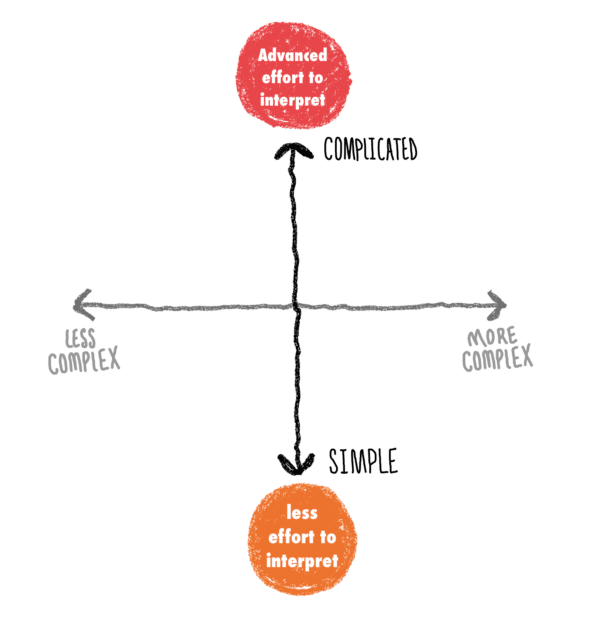Article summary
More than ever, digital experiences impact how we work, learn, and play. As these experiences become more connected and therefore complex, it’s important to design for clarity and be intentional in how we build our information.
In part one of this series, we defined “information” and how it plays a crucial role in the success or failure of a project. In part two, we’ll continue the conversation. We’ll look at why making something simple isn’t the same as making something less complex.
Complexity is Part of the Deal
Complexity is a combination of interconnected elements and forces (thanks again Abby). This is an important distinction because that means some things are simple, some things are complicated, but everything we work on is complex.
Don’t get me wrong, some things are absolutely less complex than others but that doesn’t mean they’re simpler.
That also means complexity is table stakes. We don’t get to choose our way out of it, and we can’t always design it away. (More on that in part three.)
One way to visualize this is to imagine that complexity lives on its own axis with things falling on a scale between less complex and more complex, depending on the quantity and detail of the interconnected elements and forces.

Next, visualize simplicity living on a different axis alongside complicated. This scale is based on the level of effort it takes to interpret purpose. Simplicity means it takes less effort to interpret, and complicated means it takes advanced effort to interpret.

This may seem frivolous, but it can have a big impact on your project. Let’s use everyone’s favorite thing as an example: taxes. Taxes are complex, there’s a bunch of data, rules, and calculations that decide how much someone owes or is owed. Short of the government changing how they collect taxes, this complexity cannot be reduced.
However, if you’ve ever manually done your taxes using poorly printed paper from your local library, you’ll know that we can make the process easier to interpret (simpler). You can do that using technology to automate the calculations and check the rules. We didn’t make the process less complex, but we did use technology to assume the burden and make the process simpler for people.
Up Next
Now we have an idea about the difference between simple, complicated, and complex. Next, we’ll talk about how, even when there’s a limit to how much complexity we can reduce, we can use software to remove that burden from our end users. In turn, that should boost the adoption of our product.

